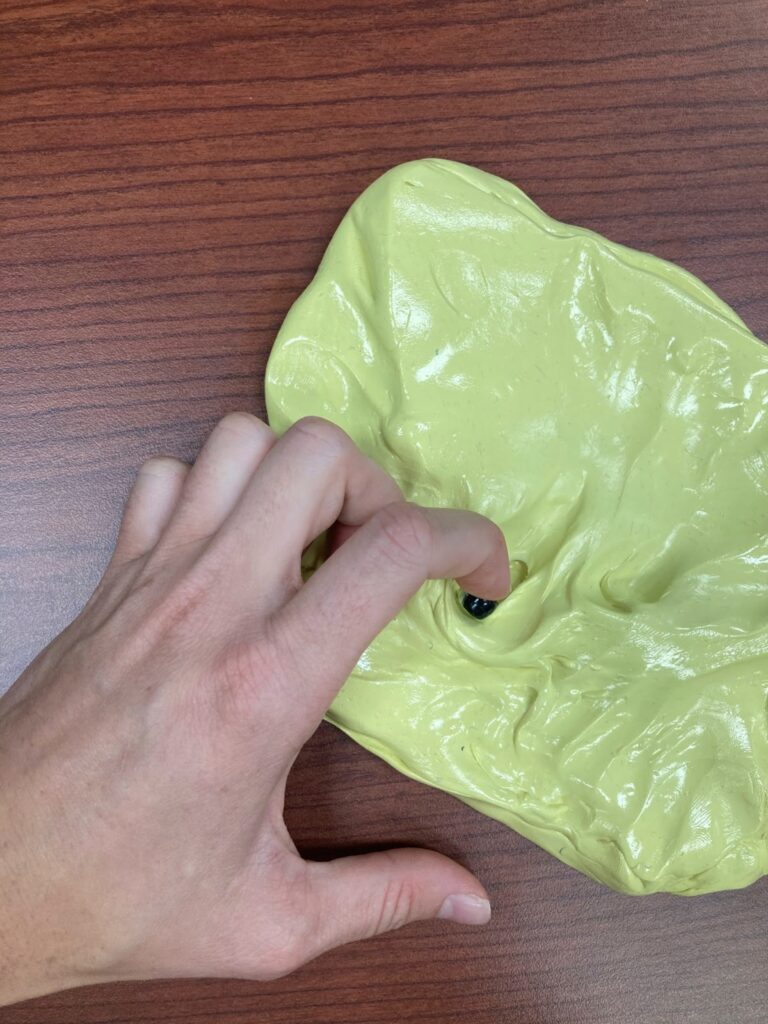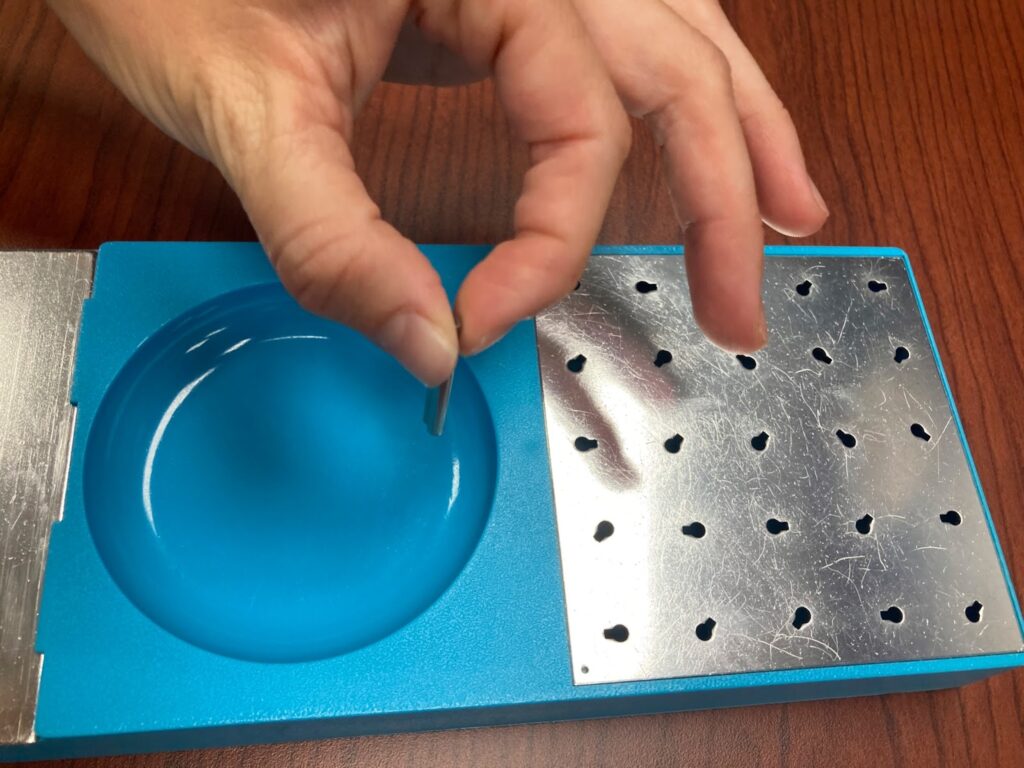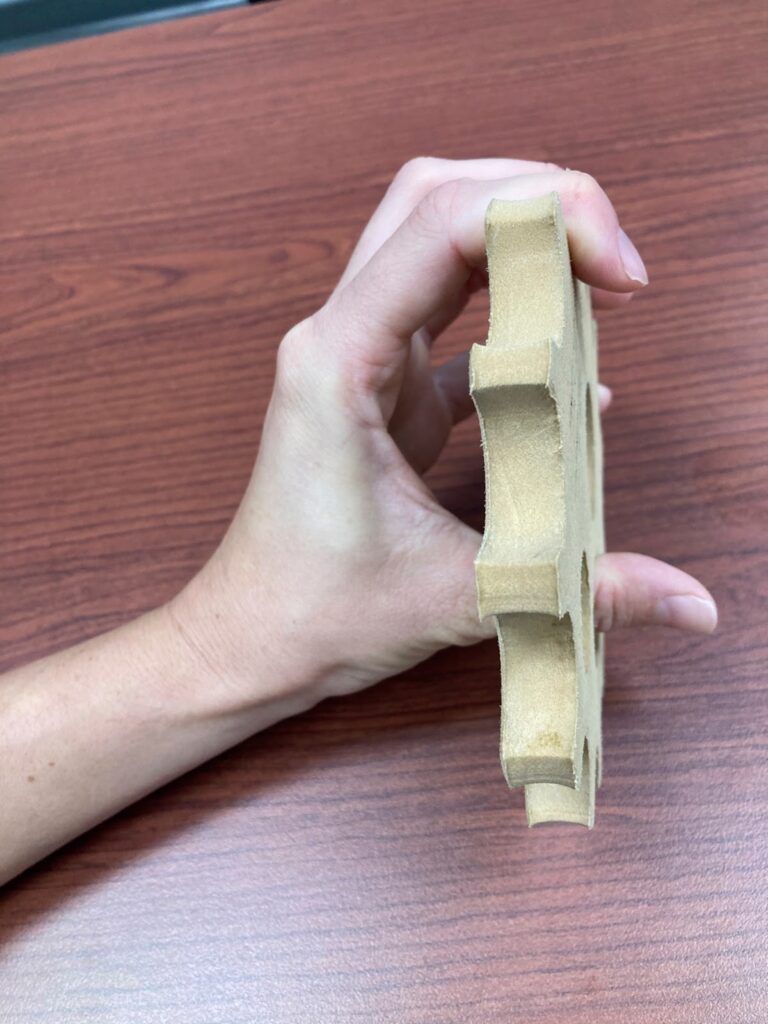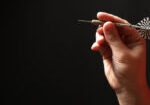By: Tori Rhodes
Lately, we’ve had a handful of patients roll through our clinic with pretty significant limitations to DIP flexion. So, we’ve collected a selection of go-to exercises for these individuals. We’ve included a few of those here.
From cat bites and fracture sites to mallet fingers and skin grafts, many individuals who are struggling to get those fingertips down into flexion are also dealing with a significant amount of scar tissue adhesions.
DIP Flexion Exercises (finger flexion exercises).
1. Push and Pulling the small dowel on the Velcro board. This one is a classic. And the cool thing(s) about it include:
A) it’s easily graded by switching from thin to thick Velcro strips, changing the size of the dowel, or including neighboring digits.
B) Also, this activity can provide some good ‘balance.’ By having a patient push and pull, you’re prompting flexion and extension of the IPs. Specifically, it’s important to be aware of the balance when dealing with a mallet finger injury. Although we want more flexion and pull-through of those DIPs, we do not want a huge extension lag to set in.

2. Bead find in Putty. This one is also easily graded. You can set a timer and challenge them to find as many beads as possible in the given time frame. For a more controlled activity, you can have them dig with the dip isolated. It can also be graded but using different grades or putty or by using different diameters of beads.
Encourage your patients to ‘dig’ with their fingers rather than dragging it through the putty. Anchor the hand on the table to pull with just the finger rather than pulling the arm. This will prompt more IP flexion and less upper arm compensation.

3. Grooved Pegboard with tip-to-tip prehension. Whether graded down to the 9-hole peg or up to the Purdue pegboard, functional pincer grasping is a great way to increase motion. This is one of the best hand therapy exercises.

4. Joint Blocking with/without Finger Platter. Have your patient isolate their IP joints and pull down. If you don’t have one of these handy platters, you can just as easily have them use their other hand to prompt the same thing or fabricate a ‘take-home’ version from thermoplastic scraps.

5. Powerweb Pull-Downs. With the thumb hooked on the edge of the power web, reach fingers as far out as possible into the holes of the web. Keep the web at the pulp of the digits to increase DIP motion specifically.
This is another one that can provide balance. And we do love balance. For a mallet finger injury or any other individual with whom you have concerns about an extension lag, alternate between pull-downs and ‘pressing’ into the web for an extended stretch can be a good way to find a balance between flexion and extension.
Grade the activity by using different ‘levels’ of the Powerweb.

2 Comments
Leave a Comment
More To Read
Dart-throwing Angle in Hand Therapy for Scapholunate (SL) Ligament Injuries.
Does Object Height Affect the Dart Throwing Motion Angle During Seated Activities of Daily Living? Cohen, Y., Portnoy, S., Levanon, Y., Friedman, J. (2020). Does object height affect the dart throwers motion angle during seated activities of daily living. Journal of Motor Behavior, (52) 4. Article Review By: Rita Steffes The Skinny: Dart Throwers Motion…
Read MoreArticle Review: Trapeziectomy and LRTI: What can patients with CMC osteoarthritis expect 12 months after the procedure?
Janakiramanan, N., Miles, O., Collon, S., Crammond, B., McCombe, D., & Tham, S. K. (2021). Functional Recovery Following Trapeziectomy and Ligament Reconstruction and Tendon Interposition (Trapeziectomy and LRTI): A Prospective Longitudinal Study. The Journal of hand surgery, S0363-5023(21)00304-X. Advance online publication. https://doi.org/10.1016/j.jhsa.2021.04.036 The skinny: Patients with trapeziometacarpal (TMC) osteoarthritis who are candidates for a trapeziectomy and…
Read MoreHand Therapy: How to Treat the Client with a New Distal Radius Fracture
A short blog post on the basics of treating a Distal Radius Fracture.
Read MoreWhat is the Effectiveness of IASTM?
Citation Kim, J., Sung, D. J., Lee, J. (2017). Therapeutic effectiveness of instrument-assisted soft tissue mobilization for soft tissue injury: Mechanisms and practical application. Journal of Exercise Rehabilitation, 13(1). doi: https://doi.org/10.12965/jer.1732824.412 The skinny IASTM is a relatively simple technique that uses the surface of an instrument to minimize the amount of pressure or force needed…
Read MoreSign-up to Get Updates Straight to Your Inbox!
Sign up with us and we will send you regular blog posts on everything hand therapy, notices every time we upload new videos and tutorials, along with handout, protocols, and other useful information.







your presentations are always great
Thanks for a review of activities I already use but needed reminder about !!